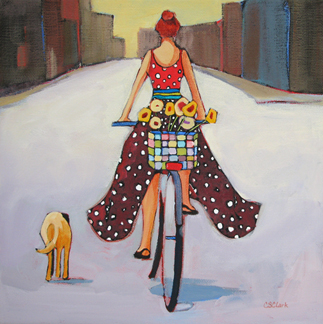For one, the US states with the lowest rates of
cycling and walking to work were, for the most part, developed later than the
ones with the highest rates. Those
states have sprawling metropoli—As Steve points out, Dallas-Fort Worth is half
the size of the Netherlands!—in stark contrast to more concentrated cities like
New York.
Newer conurbations, for the most part, were
surrounded by open land: Think of Las
Vegas, for example. They were not
constrained by water, as New York, Boston and San Francisco are, or by
established communities or other natural or artificial boundaries. And the sprawl of cities like Las Vegas and
Jacksonville, FL was enabled, in large part, by the multilane highways that
were carved through them.
Moreover, most of the newly-developed cities in
the Sunbelt did not build meaningful—or any—mass-transit systems. As cities and suburbs sprawled, the lack of
trains, buses, trolleys and other public vehicles essentially forced dependency
on the automobile that would have been merely enabled by the highways.
(In stark contrast, the bike-friendly cities of
Europe have expanded their boundaries little, if at all, since the Middle Ages.
And they are not divided by expressways in the way American cities are.)
Another point Steve makes is that much Sun Belt
development has been spurred or aided by air conditioners. I recall now the times I’ve gone to Florida
and Texas during the summer: People
spend most of their days indoors, in their homes or in movie theatres and
shopping malls. If they walk, cycle, run
or engage in any outdoor activities, they’re out early in the morning or
evening. I usually did the same: If I was outdoors in the middle of the day, I
was in a body of water!
And, interestingly, the states with the lowest
rates of cycling and walking to work are, mainly, the ones that depend on air
conditioning. Cities like Phoenix and
Las Vegas would be all but nonexistent without it; they are also not cities known
for cycling or pedestrian advocacy.
Hmm…Steve’s Law of the inverse relationship
between cycling and the use of air conditioners. Interesting.
That flies in the face of what most people (most non-cyclists, anyway)
believe about the relationship between weather or climate and cycling. It makes sense to me. Good work, Steve. Now, if you don’t want to take credit for
it…;-)

